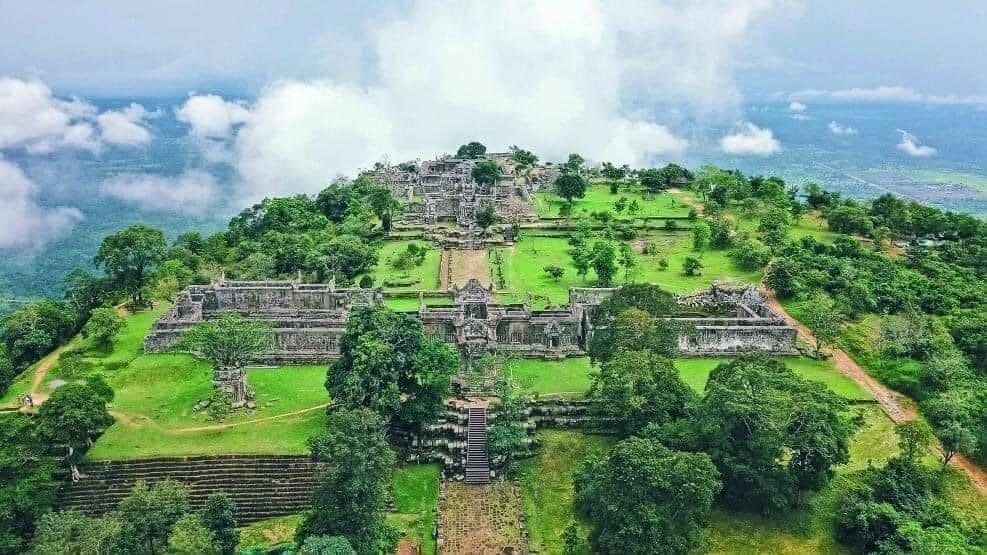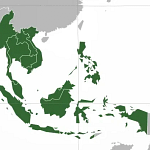Introduction: Can History Draw New Borders?
Imagine a thousand-year-old temple sitting silently atop a cliff, watching armies, diplomats, and protestors come and go. That’s the story of Preah Vihear—a Hindu temple at the center of one of Southeast Asia’s most persistent border disputes. Why has this ancient site sparked modern-day tensions between Cambodia and Thailand? And what does it reveal about how colonial history continues to shape global politics?

Breaking Down the Conflict

What Is the Conflict About?
At the heart of the Cambodia-Thailand border dispute lies the Preah Vihear Temple, a 9th-century structure perched atop the Dângrêk Mountains. Although the International Court of Justice (ICJ) ruled in 1962 that the temple belongs to Cambodia, the surrounding land remains contested. Thailand accepted the verdict but argued that the adjacent 4.6 square kilometers of land were not part of the ruling.
Who’s Involved?
- Cambodia: Seeks full recognition of sovereignty over the temple and surrounding land.
- Thailand: Claims the adjacent territory based on a different interpretation of historical maps and boundaries.
- ICJ & UNESCO: The temple was designated a UNESCO World Heritage Site in 2008—intensifying the dispute.
Historical Background and Recent Escalation
The territorial conflict between Cambodia and Thailand—particularly over the Preah Vihear temple—has a long and complex history marked by colonial treaties, international rulings, and periodic military clashes.
Timeline of Key Events
- 1907 – France and Thailand sign a border treaty.
- 1954 – Thailand occupies the Preah Vihear temple.
- 1962 – The International Court of Justice (ICJ) rules that the temple belongs to Cambodia.
- 2003 – Thai embassy is torched in Cambodian riots, sparked by a statement from a Thai actress.
- 2008–2011 – Both countries engage in military cross-firings near the temple. Civilian evacuations and troop deployments occur amid rising nationalist sentiment.
- 2025 – A Cambodian soldier was killed by a shot fired by the Thai military at the border.
The Critical Thinking Section: Is This About a Temple—or Territory?
While it may appear to be a battle over heritage, the conflict reflects deeper issues:
- Colonial Cartography Confusion: Maps drawn by French colonists are used by Cambodia; Thailand challenges their legitimacy.
- National Identity and Pride: Both nations see the temple as a symbol of historical greatness—surrendering it is politically unpopular.
- Domestic Politics: Politicians on both sides have used the conflict to bolster support or distract from internal crises.
Critics argue that both governments exploit nationalism rather than seeking compromise. Others highlight that preserving cultural heritage should not involve military posturing.
Global Perspective: Why This Matters Beyond Southeast Asia
- UNESCO’s Dilemma: Can World Heritage designations fuel geopolitical conflict instead of peace?
- Regional Stability: The conflict affects ASEAN’s image as a peaceful bloc and challenges its capacity to resolve internal disputes.
- Lessons for Post-Colonial States: Many nations in Africa, Asia and Latin America face similar boundary issues inherited from colonial rule.
Actionable Takeaways
- Mapping Reform: Encourage ASEAN-wide initiatives to reconcile colonial maps with modern GPS-defined boundaries.
- Heritage Without Borders: Promote shared management of disputed cultural sites to foster collaboration rather than competition.
- Public Education: Raise awareness among citizens about peaceful dispute resolution to reduce the risk of nationalistic escalation.
Conclusion: Can Ancient Temples Teach Modern Lessons?
The Preah Vihear conflict is more than a land dispute. It’s a reflection of how memory, identity, and politics collide—sometimes violently—over symbols of the past. But can Cambodia and Thailand find common ground, not just geographically but historically and culturally?
What do you think? Should ancient monuments unite rather than divide us? Share your thoughts below.
References & Further Reading
- ICJ. (1962). Judgment on the Temple of Preah Vihear (Cambodia v. Thailand).
- UNESCO. (2008). World Heritage Committee Decision on Preah Vihear.
- Gresser, M. (2011). Borderlines and Bloodlines: Southeast Asian Nationalism. Southeast Asia Review.
- Phay Siphan, C. (2010). Cambodia’s Legal Position on Preah Vihear. Phnom Penh Law Journal.
- Thai Foreign Ministry. (2011). Statement on Thai Sovereignty near Preah Vihear.






